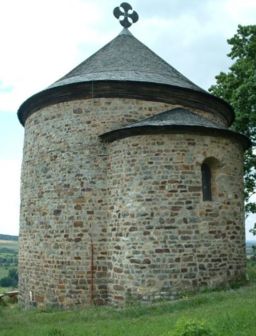Starý Plzenec
| Starý Plzenec | |||
| Town | |||
|
Starý Plzenec as seen from the Radyně Hill
|
|||
|
|||
| Country | Czech Republic | ||
|---|---|---|---|
| Region | Plzeň | ||
| District | Plzeň-City | ||
| Commune | Plzeň | ||
| Municipality | Starý Plzenec | ||
| Parts | Sedlec, Starý Plzenec | ||
| River | Úslava | ||
| Center | Masaryk Square | ||
| - elevation | 343 m (1,125 ft) | ||
| - coordinates | 49°41′52″N 13°28′25″E / 49.69778°N 13.47361°ECoordinates: 49°41′52″N 13°28′25″E / 49.69778°N 13.47361°E | ||
| Highest point | Radyně Hill | ||
| - elevation | 567 m (1,860 ft) | ||
| Area | 18.38 km2 (7.10 sq mi) | ||
| Population | 4,628 (2006-10-02) | ||
| Density | 252/km2 (653/sq mi) | ||
| First mentioned | 976 | ||
| Mayor | Zdeněk Matas | ||
| Timezone | CET (UTC+1) | ||
| - summer (DST) | CEST (UTC+2) | ||
| Postal code | 332 02 | ||
| Statistics: statnisprava.cz | |||
| Website: www.staryplzenec.cz | |||
| Starý Plzenec | |
| Municipality with Commissioned Local Authority | |
|
Rotunda of St Peter above the town
|
|
| Country | Czech Republic |
|---|---|
| Region | Plzeň |
| Little District | Plzeň |
| Municipalities | Chválenice, Letkov, Lhůta, Losiná, Mokrouše, Nezbavětice, Nezvěstice, Starý Plzenec, Šťáhlavy, Štěnovický Borek, Tymákov |
| Area | 96.52 km2 (37 sq mi) |
| Population | 11,347 (2005-12-31) |
| Density | 118/km2 (306/sq mi) |
Starý Plzenec (Czech pronunciation: [ˈstariː ˈpl̩zɛnɛts]; German: Altpilsen) is a town in the Plzeň Region of the Czech Republic. Starý Plzenec is also the seat of the Municipality with Commissioned Local Authority within the Plzeň Municipality with Extended Competence.
The first mention of the settlement dates back to 976 when, according to Thietmar of Merseburg, Boleslaus II, Duke of Bohemia, defeated a Bavarian army below a local stronghold, then called Plzeň. The urban settlement below the castle evolved into an administrative and mercantile centre of western Bohemia, but this came to an end in 1295 when King Wenceslas II founded the new city of Plzeň in a more suitable location at the nearby confluence of the Mže and Radbuza rivers. The new city soon took over the functions of old Plzeň and became known as Nová Plzeň (New Plzeň), later simply as Plzeň, while the older settlement on the Úslava river was called Stará Plzeň (Old Plzeň) and since then, in a more recent variant, Starý Plzenec.
Radyně Castle (the ruin of a medieval castle from the 14th century open to the public) is on Radyně Hill above the town (to the south). On Hůrka Hill above the town (to the north) there is the St Peter and Paul Rotunda, a Romanesque church from the late 10th century and the foundations of other buildings of the old stronghold.
...
Wikipedia






